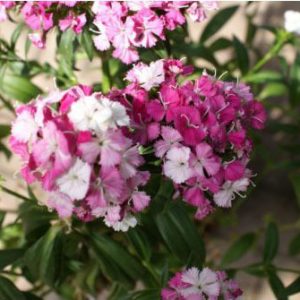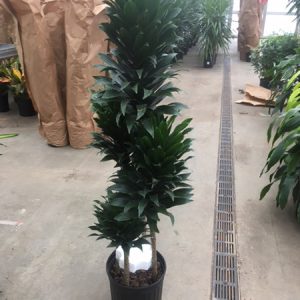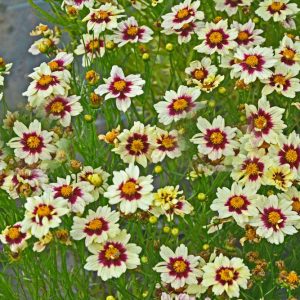Description
Euonymus – Spindle Tree –
There are about 175 species of deciduous, and evergreen shrubs, trees, and climbers, in this genus. They occur mostly in woodland and thickets, mainly in the Northern Hemisphere especially Eastern Asia. They are grown for their foliage, autumn color and ornamental, often ribbed, wing or lobed, spherical or almost spherical fruits, borne from autumn to winter, which split to reveal bright yellow, red, or orange seeds, with often colorful arils. Birds are attracted to the fruit. Leaves are opposite (rarely alternate) simple, very variable in shape, and are toothed or scalloped. In late spring or summer it bears inconspicuous cymes of 3, sometimes 7-15, small greenish or yellowish or white occasionally purple-red or red-brown flowers. Uses range from a shrub border to specimen plantings, and from hedging to ground cover. All parts may cause mild stomach upset if ingested.
Grow in any well drained soil in full sun or light shade. If grown in full sun, they need moist soils, although deciduous species and cultivars are more tolerant of dry soils. Shelter evergreens from cold, drying winds. Variegated cultivars need sun to enhance leaf variegations.
Prone to mites, scale insects, leaf miners, aphids, mealybugs, witches broom, stem dieback, powdery mildew, and fungal spots are problems.
E. europaeus ‘Albus’ – European Euonymus – European Spindle Tree – This broadly conical, deciduous, usually single stemmed shrub or small tree, found from Europe to Western Asia grows 10′ feet tall and 8′ feet wide. From spreading, somewhat pendent shoots it carries elliptic to oval shaped, scalloped, pointed, dark green leaves, to 3″ long, that turn yellow and scarlet in autumn. In spring it bears inconspicuous cymes of 5 to 7 yellow to green flowers followed by spherical, 4 lobed, clustered white fruit, are 3/4″ across, which split open to reveal large white seed with orange arils.
Zones 4-7





